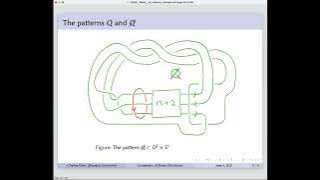Counterexamples in Topology
Counterexamples in Topology (1970, 2nd ed. 1978) is a book on mathematics by topologists Lynn Steen and J. Arthur Seebach, Jr. In the process of working on problems like the metrization problem, topologists (including Steen and Seebach) have defined a wide variety of topological properties. It is often useful in the study and understanding of abstracts such as topological spaces to determine that one property does not follow from another. One of the easiest ways of doing this is to find a counterexample which exhibits one property but not the other. In Counterexamples in Topology, Steen and Seebach, together with five students in an undergraduate research project at St. Olaf College, Minnesota in the summer of 1967, canvassed the field of topology for such counterexamples and compiled them in an attempt to simplify the literature. For instance, an example of a first-countable space which is not second-countable is counterexample #3, the discrete topology on an uncountable set. This particular counterexample shows that second-countability does not follow from first-countability. Several other "Counterexamples in ..." books and papers have followed, with similar motivations. (Wikipedia).




















